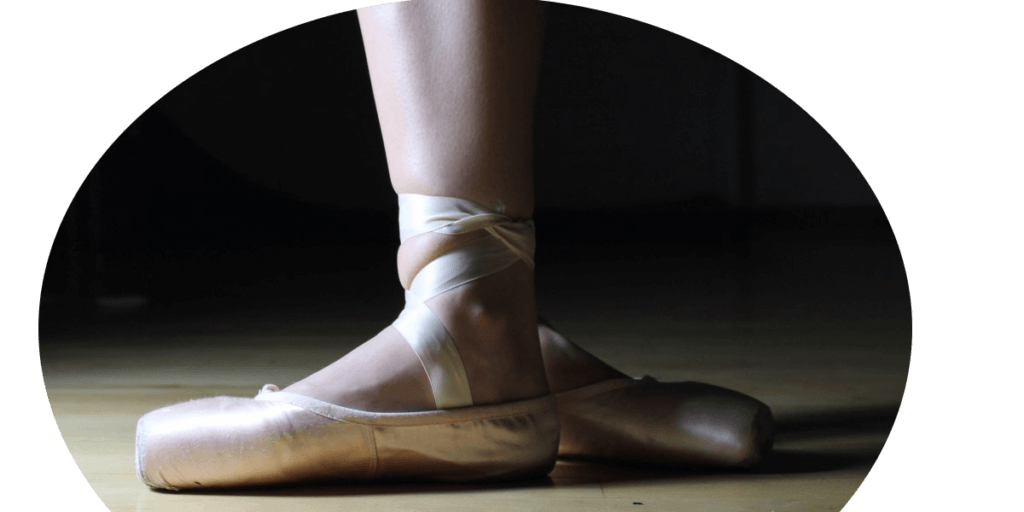Demi pointe shoes are a type of ballet shoe that looks like exactly regular pointe shoes but they are softer than regular shoes. These shoes are a bit different than ballet slippers and their sole is super soft and made using soft fiber and materials.
The demi-pointe shoes come with a toe box that is not as hard as regular pointe shoes and cannot be used to perform en pointe technique. Demi pointes have a slightly elevated heel. They tend to be more comfortable than traditional ballet shoes and allow dancers to move without restriction.
They’re also widely used by students for learning pointe work and practicing en pointe. They’re a popular choice for dancers schools for training ballet dancers.
If you’re interested in trying demi-pointe shoes, be sure to speak to your instructor first to make sure they’re the right fit for your practice routine.

What Are Demi Pointe Shoes Used For?
Demi Pointe Shoes are mainly used for ballet, but they can also be worn for jazz and modern dance. They are a form of pointe shoe that has a higher heel than traditional pointe shoes and offer more support to the arch. They are often recommended for people who have experienced ankle or foot pain from traditional pointes.
Demi Pointes allow dancers to articulate their feet more easily and crisply, paving way for better coordination in movement. Additionally, because Demi Points put less stress on the ball of the foot, dancers can extend their range of motion over a longer period of time without experiencing discomfort or soreness.
The demi pointe shoes are often used by students in mastering the pointe technique before going en pointe. They play a transitional role in changing from ballet flats to complete pointe shoes.
What is the difference between Pointe Shoes and Demi Pointe shoes?
Pointe Shoes and Demi Pointe shoes are both types of ballet shoes, but they have different functions. Pointe Shoes are designed to provide a secure foundation while dancing on pointes (a type of dance in which the dancer balances on one foot with the other lifted high off the ground). This requires strong ankle and arch muscles, so Pointe Shoes help support dancers during their most highly-rewarding moments onstage.
Demi Points usually require less strength because they’re danced at a more casual tempo; however, dancers who wear Demi Points still need strong ankles and arches in order to stay balanced. Because there is not as much pressure placed on these areas when dancing demisurely, many people find that they don’t need as sturdy a shoe for this style.
Similarities Between Demi Pointe and Pointe Shoes
Both demi-pointe and pointe shoes are types of dance shoes that help dancers make precise movements. They both have a narrow fit to allow for good flexibility, as well as an elevated heel that provides support while standing on tip-toes. Demi pointe also differs from traditional ballet Pointe shoes in that they do not have a firm grip around the dancer’s foot like regular Pointe Shoes do; this allows for more freedom and agility when dancing.
Demi Pointe shoes can be found in a variety of colours and styles to fit any dancer’s needs. They come in both leather and velvet, making them stylish additions to any dance attire. Pointe Shoes are also available with different types of soles (such as rubber or wood) so that they can provide varying levels of support for the dancer’s feet.
Differences Between Demi Pointe and Pointe Shoes
There are a few key differences between Demi Pointe and Pointe Shoes, which are listed below:
- Demi Pointes have a higher instep than pointe shoes, which makes them better for dancers who are transitioning from traditional to contemporary ballet.
- The toe box on demis is narrower than on pointes, making them more snugly fit onto the foot.
- Demis also tend to be designed with softer materials such as suede or leather uppers that provide extra protection against trauma.
- They usually come in half sizes rather than full sizes so that they will fit more comfortably onto smaller feet.
How Should Demi Pointe Shoes Fit?
When it comes to Demi Pointe shoes, finding the right fit is essential. These high-heel shoes are designed for ballet and jazz dancers, so you need to be sure that they fit snugly around your feet and ankles. You should also try on several pairs of shoes before making a purchase in order to find the perfect size.
If you have wide feet or tend to experience pain when wearing heels, then it might be best not to buy Demi Pointes at all. Instead, consider buying pointe dancer boots or flats that will adjust as you grow more comfortable with wearing high-heeled footwear. And last but not least: always remember to stretch before every performance!
Can You Go En-Pointe in a Demi Pointe Shoe?
Most ballet dancers spend years training their feet to move in pointe shoes, so the answer to this question is obviously yes. However, there are a few caveats that should be noted.
First of all, you will need to make sure your foot is properly conditioned and relatively pain-free before attempting pointe work in a demi-pointe shoe.
Besides, it’s important not to force your feet under too much pressure or put unnecessary stress on your joints by moving them unnecessarily quickly, or forcefully.
Your goal should simply be learning how to move gracefully and fluidly in these specialized shoes. Always maintain an even weight distribution across both heels and the ball of the foot when performing exercises such as leaps or turns in Pointe Shoes – otherwise, you risk developing injuries down the road!

